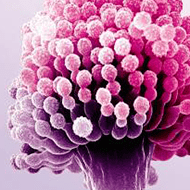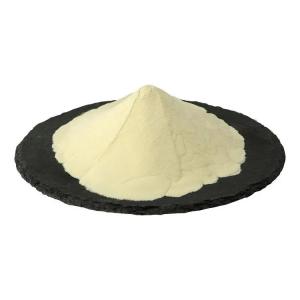The host defense mechanism of phospholipids in infectious diseases
Time:2025-08-14As a core component of biological membranes, phospholipids play multi-level and multi-dimensional roles in the host's defense mechanisms against infectious diseases. Their functions are not limited to maintaining cellular structure; they further enhance the host's anti-infective capacity through participating in immune signal transduction, regulating immune cell activity, and directly inhibiting pathogens. The specific mechanisms are as follows:
I. Acting as Precursors of Immune Signaling Molecules to Initiate Anti-Infective Signaling Pathways
Phospholipids are key precursors of various immune signaling molecules. Under pathogen stimulation, they can generate biologically active lipid mediators through enzymatic hydrolysis, triggering the host's defense responses.
For example, phospholipase A₂ (PLA₂) can catalyze phospholipids to release arachidonic acid, which is further metabolized into inflammatory mediators such as prostaglandins and leukotrienes. These molecules can recruit immune cells like neutrophils and macrophages to gather at the infection site, enhancing local inflammatory responses to eliminate pathogens.
In addition, sphingosine-1-phosphate (S1P), a phospholipid derivative, can regulate the migration and survival of immune cells by activating G protein-coupled receptors, promoting the recruitment of lymphocytes from lymphoid organs to infected tissues and strengthening adaptive immune responses.
II. Maintaining the Structure and Function of Immune Cells to Ensure Anti-Infective Effects
The activation, phagocytosis, and cytotoxicity of immune cells depend on dynamic changes in cell membranes. Phospholipids, as core components maintaining membrane fluidity and integrity, directly affect the functional performance of immune cells.
Phagocytes such as macrophages and neutrophils engulf pathogens by invaginating their cell membranes to form phagosomes, a process requiring phospholipid-mediated membrane structure remodeling. Meanwhile, the fusion of phagosomes with lysosomes relies on phospholipid sorting and recognition to ensure pathogens are degraded by lysosomal enzymes.
In the cytotoxicity of T cells and NK cells, membrane phospholipids (e.g., phosphatidylserine) can act as signaling molecules involved in target cell recognition, while the release of cytotoxic granules also depends on phospholipid-regulated membrane fusion, ensuring precise clearance of infected cells.
III. Directly Inhibiting Pathogen Invasion and Proliferation
Some phospholipids or their derivatives can directly exert anti-infective effects by disrupting pathogen structures or interfering with their metabolism.
For bacteria, phospholipids (e.g., phosphatidylcholine) can insert into bacterial cell membranes, destroying their permeability barriers and causing bacterial contents to leak, leading to death. Additionally, phospholipids can inhibit the formation of bacterial biofilms, reducing pathogen colonization in host tissues.
For viruses, phospholipids can block viral entry into host cells by interfering with the fusion process between the viral envelope and the host cell membrane (e.g., the invasion of influenza virus and HIV relies on membrane fusion). Meanwhile, phospholipid metabolites (e.g., certain sphingolipids) can inhibit viral replication and assembly, reducing viral load.
IV. Regulating Intestinal Flora Balance and Enhancing Mucosal Immune Defense
In mucosal tissues such as the intestine, phospholipids indirectly participate in anti-infective defense by influencing intestinal flora composition and mucosal barrier function.
Phospholipids can provide nutrients for beneficial intestinal bacteria (e.g., lactic acid bacteria, bifidobacteria), promoting their proliferation. Metabolites of these beneficial bacteria (e.g., short-chain fatty acids) can strengthen the intestinal mucosal barrier, reducing adhesion and invasion by pathogenic bacteria.
Furthermore, phospholipids can enhance tight junctions between intestinal epithelial cells, maintaining the integrity of the mucosal barrier. They also promote mucosal immune cells (e.g., goblet cells, Paneth cells) to secrete mucus and antimicrobial peptides, forming the first line of defense against pathogens.
Phospholipids participate in the host's anti-infective process through a multi-layered mechanism involving "signal regulation, cellular function, direct bacteriostasis, and mucosal defense." Their roles cover both the rapid response of innate immunity and the precise regulation of adaptive immunity. In-depth analysis of phospholipids' host defense mechanisms can provide a theoretical basis for developing phospholipid-based anti-infective drugs or immunomodulators, with potential applications particularly in fields such as drug-resistant bacterial infections and viral infections.


 CN
CN





